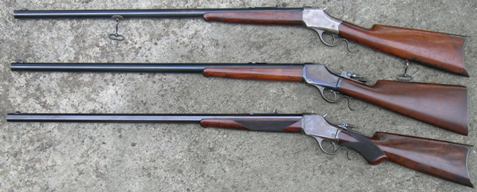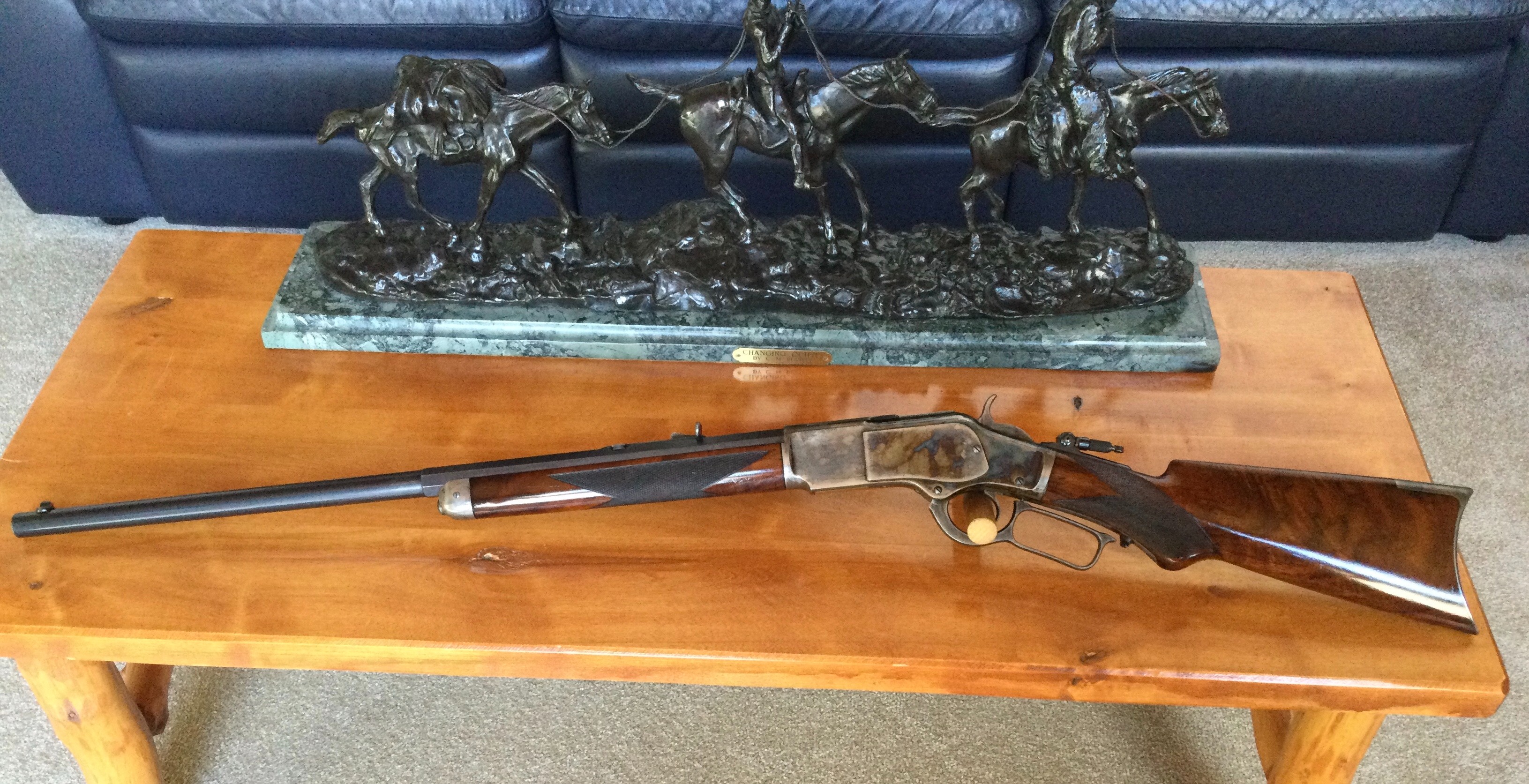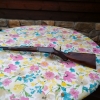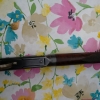June 26, 2013
 Offline
OfflineThere’s a real nice model 55 solid frame 32 WS on Guns International right now if anyone’s interested. Most model 55’s I’ve seen have severely flaked receivers and are 30 WCF. This one looks original and in beautiful condition. The price is up there a bit, but hard to find a better one.
Don
June 12, 2019
 Offline
OfflineAs a gunsmith and reloader for 40+ years I never cared much for the 32 win special, until I bought a Model 55 in that caliber and some Hornady Leverevolution. I now have a new found respect for that caliber as an ‘up to’ 200 yard cartridge. It’s flat shooting at that range, and very accurate out of my 55.
April 15, 2005
 Online
Onlinedeerhunter said
There’s a real nice model 55 solid frame 32 WS on Guns International right now if anyone’s interested. Most model 55’s I’ve seen have severely flaked receivers and are 30 WCF. This one looks original and in beautiful condition. The price is up there a bit, but hard to find a better one.Don
Don,
That is a very late production Model 55, and more than likely it was manufactured after 1933 (parts clean-up). Accordingly, it was blued with a different formula than the standard production Model 55 rifles, and that would explain the high condition of the bluing on the receiver frame. The clue as to when that rifle was manufactured is the upper tang marking… 99.9% of the Model 55 rifles have the Type 6 upper tang marking, and that rifle has a Type 7 tang marking. Winchester made the transition from the Type 6 to the Type 7 tang marking in December, 1937 – March, 1938 on the Model 94 and Model 64 receivers. In my survey of the Model 55, I have documented (5) parts clean-up rifles with a Type 7 upper tang marking.
Bert
WACA Historian & Board of Director Member #6571L

April 1, 2005
 Offline
OfflineBert – thank you for the information regarding the upper tang markings. I guess I thought the upper tang markings were the same on all 55’s – at first I didn’t figure it out and then I pulled a couple of early 55’s out of my safe and saw the difference. Attached is a photo for others that may be interested from a early 55, serial # 42. I sit around and read these Forum posts late at night and when guys are talking politics, taxes or whether the old levers are a good investment I tend to get a little frustrated and wonder if I should just quit reading the posts. Then, when I least expect it, I read a post that contains valuable information regarding something I am very interested in and decide I should continue reading! The 55 for sale is nice and if it is original and correct I think it is a good buy for someone. I have owned a lot of 55’s over about 50 years and one with this much blue has always been hard to find – the fact it is not a takedown makes it ever better.

November 19, 2006
 Offline
OfflineBert H. said
Don,
That is a very late production Model 55, and more than likely it was manufactured after 1933 (parts clean-up). Accordingly, it was blued with a different formula than the standard production Model 55 rifles, and that would explain the high condition of the bluing on the receiver frame. The clue as to when that rifle was manufactured is the upper tang marking… 99.9% of the Model 55 rifles have the Type 6 upper tang marking, and that rifle has a Type 7 tang marking. Winchester made the transition from the Type 6 to the Type 7 tang marking in December, 1937 – March, 1938 on the Model 94 and Model 64 receivers. In my survey of the Model 55, I have documented (5) parts clean-up rifles with a Type 7 upper tang marking.
Bert
Bert – could you show a photo of the Type 6 and Type 7 barrel markings for the Model 55.
Thanks!
April 15, 2005
 Online
Onlinesteve004 said
Bert – could you show a photo of the Type 6 and Type 7 barrel markings for the Model 55.
Thanks!
Steve,
Did you mean Type 6 and Type 7 upper tang markings? The Model 55 barrel markings remained the same throughout the entire production run.
Bert
WACA Historian & Board of Director Member #6571L

April 1, 2005
 Offline
OfflineSteve – if you look at the photo with my post above you will see the Type 6 upper tang markings – then, compare it with the upper tang photo from the original post in this thread which has the Type 7 markings -you will see the difference. From what Bert said it sounds like it was only very late 55’s (parts clean up) which had the Type 7. In addition to what I learned about the upper tang difference I did not realize that the late 55’s were blued with a different formula – no wonder it has so much blue. Like I said before, I have owned a lot of 55’s but never been around one of the very late ones. If you like 55’s, here is a dandy deluxe, serial number 5.



April 1, 2005
 Offline
OfflineOld Logger said
The ad says .30-30, the pics say .32 Spec.
?? – the Guns International advertisement states the gun is a Winchester Model 55, solid frame in 32 W.S. – if you look at the photos of the gun, the barrel marking also clearly shows the gun is a 32 W.S. (might have to use your zoom). Now that I know it is a very late parts clean up gun with bluing of a later formula, I don’t like it as well as I did.

April 15, 2005
 Online
OnlineWACA Historian & Board of Director Member #6571L

October 29, 2019
 Offline
OfflineBurt Humphrey said
?? – the Guns International advertisement states the gun is a Winchester Model 55, solid frame in 32 W.S. – if you look at the photos of the gun, the barrel marking also clearly shows the gun is a 32 W.S. (might have to use your zoom). Now that I know it is a very late parts clean up gun with bluing of a later formula, I don’t like it as well as I did.
The sellers description says .30-30. I realize it’s a .32. Read the description.
Shoot low boys. They're riding Shetland Ponies.
April 15, 2005
 Online
OnlineBill Hanzel said
if One were buying this gun, how much would the fact that it’s a late model parts clean up affect the value? Or do condition and the fact that it s a solid frame out weigh the late production factor?thanks
Bill,
Being a late production parts clean-up rifle has very little (if any) affect on the value in my opinion. The key to this rifle’s value is its excellent condition.
Bert
WACA Historian & Board of Director Member #6571L



 Log In
Log In








